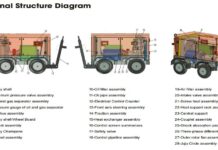Are you pondering over the right materials for your next fabrication project? Metal fabrication is a craft that requires precision, understanding, and the right resources. One of the most crucial decisions you will make is selecting the material that best suits your project’s needs. Among the various options available, galvanized steel is a standout for its robustness and functionality. This guide will explore why galvanized steel is frequently chosen by fabricators and how it compares to other metals.
Understanding Galvanized Steel
What exactly is galvanized steel? At its core, it’s steel that has undergone the process of galvanization, which involves applying a protective zinc coating to prevent rusting. The zinc acts as a barrier against corrosive elements making the steel tougher and more durable.
How Galvanization Works
The most common method to galvanize steel is through hot-dip galvanization. In this process, steel components are submerged in molten zinc, which adheres to the surface, forming a protective layer. This layer not only shields the steel from environmental elements but also enhances its longevity and resilience.
Benefits of Using Galvanized Steel
The advantages of using galvanized steel in fabrication projects are numerous:
- Corrosion Resistance: Galvanized steel offers superior protection against rust and corrosion, making it ideal for outdoor or marine environments where moisture and humidity are prevalent.
- Durability: With its robust zinc coating, galvanized steel can withstand harsh conditions without succumbing to wear and tear. This makes it suitable for structures that require longevity.
- Cost-Effectiveness: While offering extended durability, galvanized steel is often more economical than many other treated metals. Its maintenance costs are also lower because it rarely needs repainting or additional corrosion protection.
- Versatility: Galvanized steel is used in a wide array of applications, from industrial buildings to home appliances. Its ease of use and the ability to be welded or shaped make it popular across various industries.
Understanding these properties will help you see why this material could be the optimal choice for many metal fabrication projects. As we delve deeper into comparisons with other metals, keep in mind these foundational benefits that might make galvanized steel the frontrunner for your specific needs.
Comparison with Other Common Fabrication Metals
When choosing materials for fabrication, it’s important to compare the options available. Let’s take a closer look at how galvanized steel stands against other popular metal fabrication materials like aluminum, stainless steel, copper, and brass.
Aluminum
- Aluminum is known for being lightweight yet strong, which makes it ideal for applications where weight is a critical factor, such as in aerospace or automotive industries. Unlike galvanized steel, aluminum is naturally corrosion-resistant without the need for additional treatments. However, for structural projects where durability under heavy load is required, galvanized steel often proves to be a sturdier choice.
Stainless Steel
- Stainless steel is another highly corrosion-resistant material, favored for its sleek finish and strength. It is often used in kitchen appliances, medical equipment, and modern architecture. While stainless steel does not require galvanization to resist rust, it is generally more expensive than galvanized steel. For projects where budget constraints are tight, galvanized steel may offer a more cost-effective solution without compromising much on durability or appearance.
Copper
- Copper stands out for its excellent conductivity and natural antimicrobial properties, making it perfect for electrical applications and surfaces in healthcare settings. However, copper is significantly more expensive than galvanized steel and softer, making it less ideal for high-strength applications. Galvanized steel is preferable when you need toughness and affordability in harsh environments.
Brass
- Brass is an alloy of copper and zinc known for its machinability and an attractive golden color used in decorative applications. While brass exhibits good corrosion resistance and is easy to work with, its cost and softness compared to galvanized steel make it less suitable for structural purposes. Galvanized steel, on the other hand, provides a more robust solution for heavy-duty applications.
Factors to Consider When Choosing a Material
Selecting the right material for your fabrication project isn’t just about comparing strength and durability. Here are several critical factors to weigh in your decision:
- Environmental Conditions: Consider the climate and exposure to chemicals or salt. Galvanized steel is excellent for outdoor environments due to its superior corrosion resistance.
- Mechanical Requirements: Think about the required strength, hardness, and flexibility. Galvanized steel is excellent for bearing heavy loads and resisting impact.
- Longevity and Maintenance Needs: Evaluate how long you need the material to last without significant maintenance. Galvanized steel often comes out ahead due to its long life span and low upkeep.
- Budget and Availability: Assess your project budget and the availability of materials. Galvanized steel often offers a more budget-friendly option, especially for large-scale projects.
- Aesthetics and Finish Requirements: Consider the final appearance you wish to achieve. While metals like brass and stainless steel offer unique finishes, galvanized steel can be an excellent backdrop for paint or other finishes if aesthetics are adaptable.
Understanding these factors will help you make a more informed decision about which material is best suited for your specific needs, balancing performance, cost, and aesthetic considerations.
Real-world Applications of Galvanized Steel
Galvanized steel isn’t just theoretical; it’s a material of choice in many practical applications. Let’s explore some real-world cases where galvanized steel is preferred for its numerous advantages.
- Infrastructure: Galvanized steel is extensively used in the construction of bridges, highways, and tunnels. Its ability to withstand environmental elements makes it ideal for such large-scale projects, where longevity and minimal maintenance are crucial.
- Automotive Industry: From the body of cars to their structural components, galvanized steel is valued for its resistance to rust and overall strength, which helps extend the lifespan of vehicles and reduce repair costs over time.
- Agriculture: Farmers rely on galvanized steel for constructing barns, fencing, and grain silos. The protective coating of zinc ensures that these structures resist weathering and corrosive materials like animal waste and fertilizers.
- Residential and Commercial Construction: Whether it’s beams, roofing, or exterior cladding, galvanized steel is a popular choice due to its durability and the added security it offers against structural degradation.
These examples show that galvanized steel is versatile and practical across various industries, thanks to its unique properties that ensure safety, durability, and cost-effectiveness.
Tips for Working with Galvanized Steel
Working with galvanized steel can be straightforward, but there are some best practices and tips that can ensure you get the best results with this material:
- Handling and Cutting: Always wear gloves when handling galvanized steel to avoid cuts and ensure that any cutting tools are equipped with blades suitable for metal. Keep your work area well-ventilated to avoid inhaling any metallic dust.
- Welding and Joining: When welding galvanized steel, it’s important to use the correct techniques and appropriate welding rods to prevent weakening the steel or damaging the zinc coating. Pre-welding treatments and post-welding galvanizing touch-ups may be necessary to restore corrosion protection.
- Safety Tips: Be cautious of zinc fumes when welding or cutting galvanized steel. These fumes can be hazardous, so proper ventilation and respiratory protection are essential. Also, ensure any residue or filings are cleaned up to prevent slips or injuries in the work area.
- Maintenance: Although galvanized steel is low maintenance, periodic inspections are wise, especially in harsh environments. This helps ensure the integrity of the zinc coating and the underlying steel.
By following these tips, fabricators and DIY enthusiasts alike can maximize the lifespan and effectiveness of their galvanized steel projects.
Conclusion
Choosing the right material for metal fabrication is not just about assessing costs or the basic properties of the materials; it’s about understanding how these factors will interact with the specific demands of your project. Galvanized steel offers a compelling combination of durability, cost-efficiency, and versatility, making it a favored choice in many industries. From constructing resilient infrastructures to crafting durable consumer products, galvanized steel stands out as a robust option capable of meeting a diverse range of fabrication needs.
As we’ve seen, while other metals like stainless steel, aluminum, copper, and brass have their unique strengths and aesthetic appeals, galvanized steel often provides a balanced solution especially where resistance to corrosion, longevity, and budget are major considerations. Whether you are embarking on a large-scale industrial project or a small, personal venture, the properties of galvanized steel can provide the reliability and performance necessary to achieve successful outcomes.





























